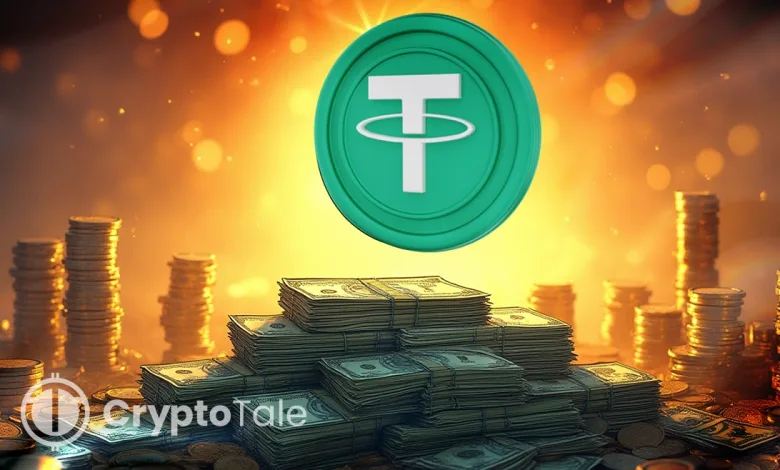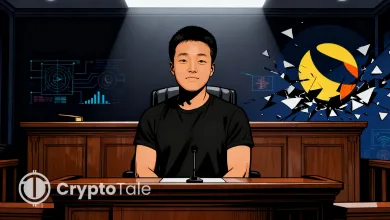S&P Downgrades Tether, CEO Stands Firm on USDT’s Future

- Tether’s CEO challenges S&P’s downgrade, questioning traditional financial rating models.
- S&P downgraded Tether, citing BTC’s volatility as a threat to USDT’s stability and dollar peg.
- Tether defends its reserves, including U.S. Treasury bills, to ensure financial strength.
Tether’s CEO, Paolo Ardoino, responded to S&P Global Ratings’ downgrade of the company with a defiant post on X. In his statement, Ardoino wrote, “We wear your loathing with pride.” He emphasized Tether’s financial stability and the inadequacies of traditional rating models used by legacy financial institutions, which have previously failed investors.
S&P downgraded Tether’s rating from “constrained” to “weak,” citing concerns about its reserves. Specifically, S&P highlighted the platform’s exposure to volatile assets like Bitcoin, which comprise a significant portion of its reserves. The agency warned that a sharp drop in Bitcoin’s value could undermine USDT’s stability, causing it to lose its peg to the U.S. dollar.
Tether’s Reserve Mix Raises Concerns Amid Bitcoin Exposure
The downgrade arises from increasing risks around Tether’s mix of reserves. The company’s assets consist of Bitcoin, gold, corporate bonds, and secured loans. While Tether says it has solid reserves, S&P highlighted the lack of clarity in the company’s reserve disclosures. Tether is now opting to post “attestations” in place of an audit of its finances, which would only increase eavesdropping worries.
In a transparency report from Tether, Bitcoin accounts for 5.4% of its total reserves, up from 3.6% in its previous reports. The company has over 87,728 BTC now – a significant surge in its Bitcoin holdings. The surge has caused worry that a sharp decrease in the value of Bitcoin may destabilize reserves underpinning USDT.
Analysts at S&P said that a significant drop in Bitcoin’s price might lead to an undercollateralized USDT. That would make it more difficult for Tether to maintain its peg to the dollar. The $184 billion value of USDT is at risk of fluctuations in the price of Bitcoin.
Yet Tether insists it is diversified and that low-risk assets, such as U.S. Treasury bills, back its reserves. The company is said to be the 17th-largest holder of U.S. Treasury bills in the world.
Tether Faces Scrutiny Over High-Risk Assets and Lack of Transparency
But Tether’s balance sheet also includes some higher-risk holdings, such as secured loans, which account for roughly 8% of its reserves. While such loans are not related-party transactions, S&P said it has concerns with the exposure. Tether has not provided information about these loans or about whom it chose as the custodians of its reserves.
S&P also noted the lack of full transparency regarding Tether’s custodians and counterparties. USDT does not provide direct redemption like Circle’s USDC. This void may erode investor confidence, especially during periods of market volatility when liquidity and redemption choices matter.
Related: Tether Eyes €1B Robotics Deal in a Move Beyond Stablecoins
Ardoino criticized conventional financial models, which he said had let investors down and led to systemic volatility for everyone. He laid into the financial system for not adapting, and said Tether’s overcapitalized model is in stark contrast to the failings of traditional-banking norms. Ardoino countered that Tether’s growth is evidence of what new models for finance could achieve.
Tether’s chief executive has vigorously denied the suggestion that there is a problem with the company’s model. He views the company’s profitability and overcapitalization as evidence that Tether is more stable than traditional financial institutions. Ardoino and Tether would continue to challenge the traditional banking system for as long as it takes to thrive in the crypto space.
The downgrade of Tether by S&P may have set off alarm bells, but Tether’s management is unfazed. The fact that the company keeps making money indicates the flexibility of different financial models, Ardoino says. As Tether presses ahead, it does so under a cloud of persisting scrutiny, but the company’s CEO is unshakable in his confidence that the stablecoin will maintain its dominant position despite external pressure.





